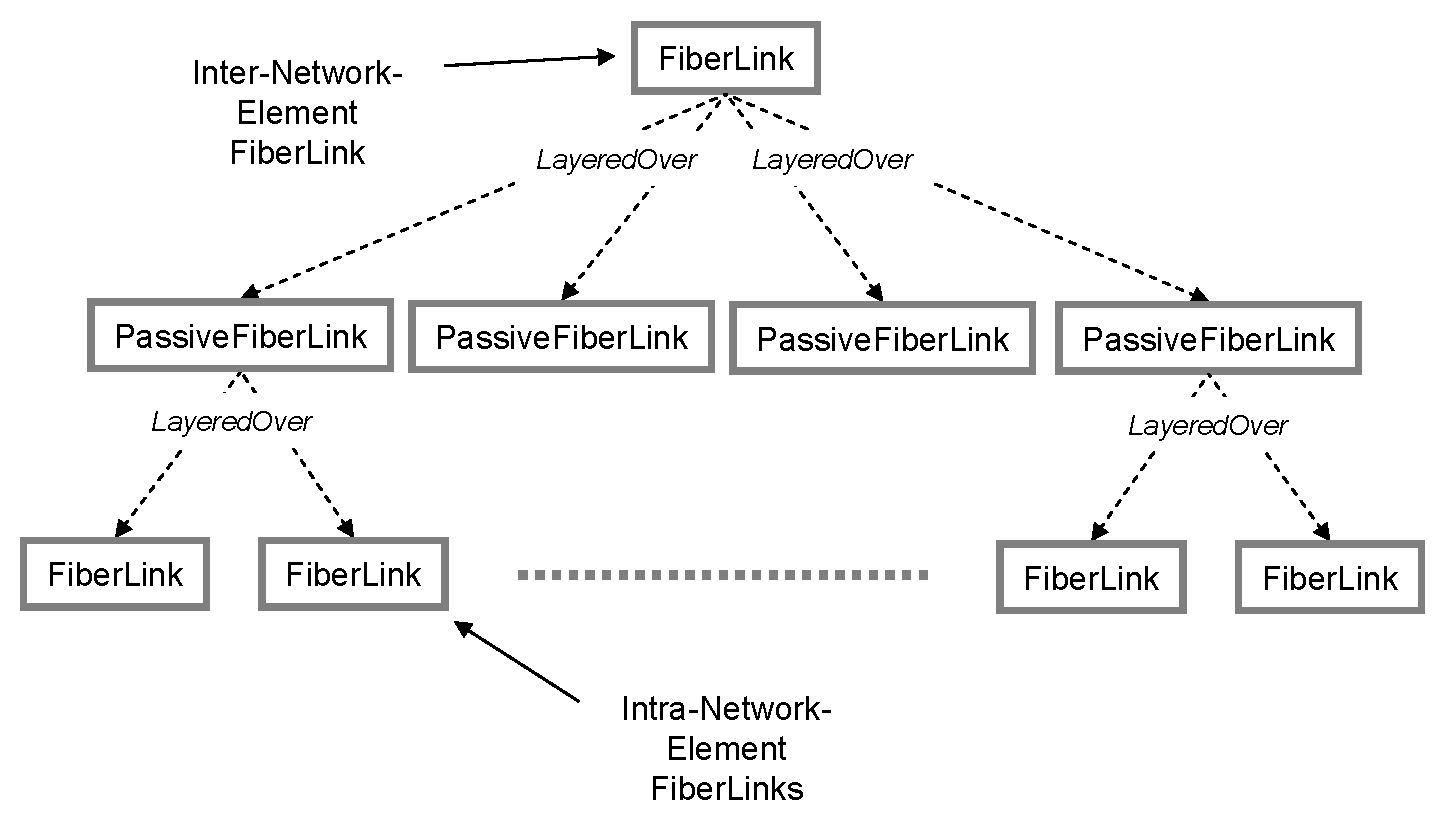The PassiveFiberLink is an abstract entity that allows OTM to distinguish inter-network-element fiber link failures from intra-network-element errors.
A PassiveFiberLink entity is created directly connecting each pair of transponder OCH ports. As shown in Inter- and Intra-network-element FiberLinks and PassiveFiberLinks, the two start and end intra-network-element FiberLinks underlay their corresponding PassiveFiberLink. While the four (or eight) PassiveFiberLinks, carried by the passive filter, underlay the inter-network-element FiberLink.

PassiveFiberLinks can generate a LineFailure alarm. The relationships shown in Inter- and Intra-network-element FiberLinks and PassiveFiberLinks allow OTM to distinguish between a problem on a single, internal fiber and a problem on the combined fiber linking the network elements.
When the intra-network-element FiberLink is cut, there are multiple LineFailure alarms received on the PassiveFiberLinks.
When a single enter-network-element FiberLink is cut, only one PassiveFiberLinks receives a LineFailure alarm and the system points to the enter-network-element FiberLink as the root cause of the alarm.